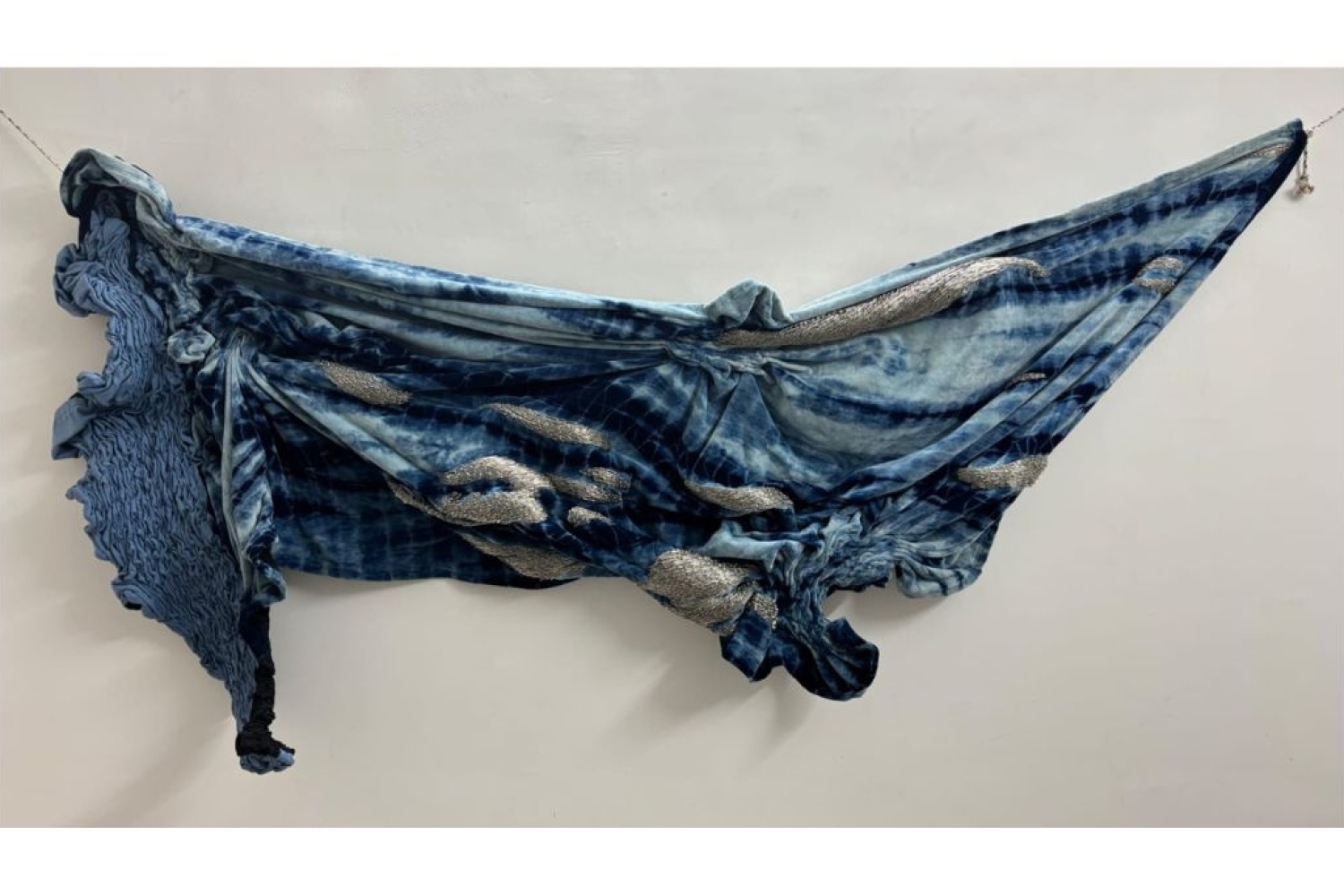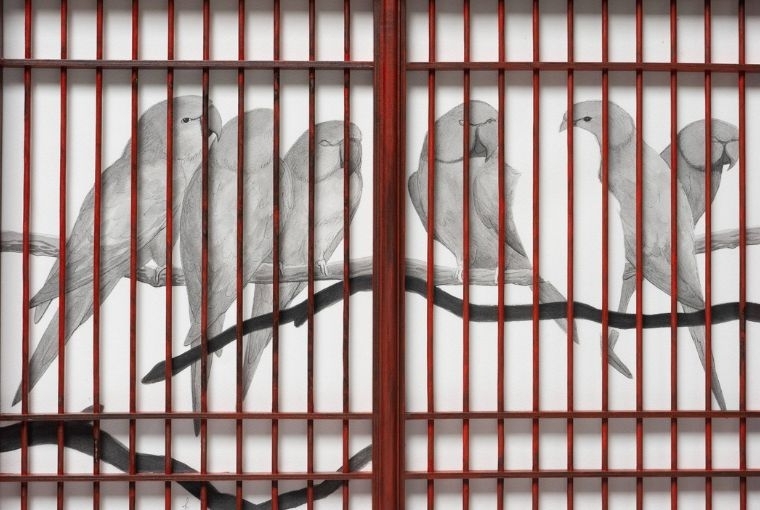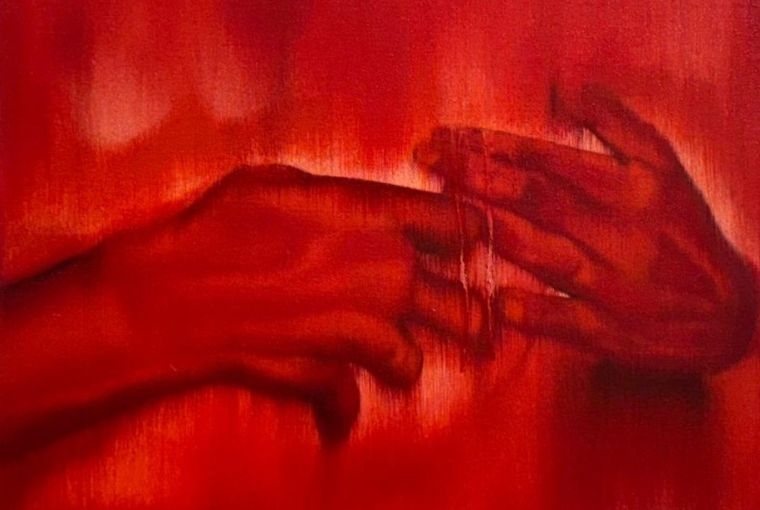
Artist: Juhikadevi Bhanjdeo

Artist: Juhikadevi Bhanjdeo
"LATITUDE 28, one of India’s leading contemporary art galleries, announced the opening of its new gallery space in Defence Colony, New Delhi, marking a pivotal moment in the gallery’s fifteen-year journey of curatorial innovation, artistic discovery, and global engagement.
Founded in 2010 by Bhavna Kakar, LATITUDE 28 has consistently championed experimental, research-driven, and material-led practices from South Asia. Over the past decade and a half, it has evolved into a vital hub for critical discourse, exhibiting artists whose work interrogates memory, identity, and geopolitical histories. The gallery’s new space in Defence Colony embodies this legacy while envisioning a renewed direction, a nexus where artistic experimentation meets critical conversation.
Since its inception, LATITUDE 28 has been instrumental in shaping India’s contemporary art ecosystem through landmark exhibitions and participation in fairs internationally. Each display reflected the gallery’s distinctive commitment to contextually rooted yet globally resonant art practices.
The gallery’s artists, including Jyoti Bhatt, Khadim Ali, Gopa Trivedi, Sudipta Das, Waswo X. Waswo, Firi Rahman, Sanket Viramgami, and Farhat Ali, to name a few, have garnered international acclaim, with presentations at prestigious platforms such as the India Art Fair, Art Basel, Art Dubai, Bukhara Biennale, Dhaka Art Summit, and the Venice Biennale. LATITUDE 28’s dedication to amplifying voices from the Global South has not only contributed to redefining the narrative of South Asian contemporary art but also positioned the gallery as an intellectual bridge connecting regional practices with global dialogues.
The New Space: A Site of Expanded Dialogue
The new LATITUDE 28 space in Defence Colony reimagines the gallery as a site of expanded dialogue, a convergence of art, writing, and curatorial research. The design of the space draws from the idea of permeability: between artist and audience, practice and theory, the visual and the discursive. It will serve not only as a venue for exhibitions but also as a space for residencies, talks, and cross-disciplinary projects that engage with the most urgent artistic and cultural questions of our time.
This move represents an exciting expansion beyond LATITUDE 28’s Lado Sarai address, a site that has hosted some of the most significant exhibitions in the Indian contemporary art calendar. With the addition of a new space in Defence Colony, renowned for its creative energy and cultural vibrancy, LATITUDE 28 extends its legacy, creating an expanded site for dialogue and collaboration among artists, collectors, and curators in a centrally connected and architecturally sophisticated environment."

Artist: Firi Rahman
Exhibition Concept
Latitude 28’s new home is not simply a container for art. It is a stage where meaning is continuously produced. The gallery is imagined as a site of dramaturgy, where bodies, materials, light and time unfold in choreographed tension. Its long sightlines, strong beams, modular false walls and natural light are not neutral elements but active collaborators in shaping experience. In this inaugural exhibition, Dramaturgies of Space, seven distinct practices, Firi Rahman, Sudipta Das, Salik Ansari, Juhika Bhanjadeo, Chandan Bez Baruah, Waswo X. Waswo and Riyas Komu, activate the architecture not as a backdrop but as a partner. Together they inaugurate the gallery as a living stage where South Asian contemporary practices generate new scripts of seeing, moving, and dwelling.
The idea of space as performance has been central to performance theory, particularly in the work of Erika Fischer-Lichte, who reminds us that performance is transformative precisely because it places the spectator inside the act rather than outside it. The visitor in this exhibition is not passive. They cross thresholds, voids, and suspensions, walking beneath Sudipta’s fragile paper figures cascading from above, detouring around Chandan’s carved landscapes, or pausing before Firi’s ecological drawings unfurling across the walls, confronting Komu’s politically charged figuration that transforms the gallery into a site of dialogue and dissent. The gallery itself performs. Its false partitions, beams, and windows fold into the dramaturgy, creating an environment where architecture and artwork together choreograph how we move and feel.
Michel Foucault described heterotopias as spaces that mirror, juxtapose, and destabilise other realities. The modern art gallery (especially the white cube) is one such cultural invention: a space devoted to art, removed from ordinary functions. A gallery gathers works from multiple geographies, times, and contexts and places them side by side. It collapses now and then, performing the heterotopic function of juxtaposition: bringing together what is otherwise scattered. The gallery becomes such a site in this exhibition. Waswo’s staged miniatures summon colonial histories as playful fictions, while Juhika’s layered fragments open intimate psychological interiors. Each practice becomes a heterotopia within the gallery, unsettling the often presumed neutrality of the white cube, whilst inviting visitors to reconsider what a gallery can hold.
South Asian thought offers another lens through which to understand the spatial dramaturgy of the exhibition. Here, space is never inert but textured by migration, ecology, hybridity, and myth. Rustom Bharucha has argued that performance is always intercultural, a crossing of thresholds. It resonates the notion of ra?gabh?mi, a stage that carries cosmological and social charge. Further, the ra?gabh?mi, in classical Indian thought was a sacred charged site where worlds overlapped (cosmic, social, emotional). It offered an opportunity for reciprocal encounter, where the artwork “looks back”, and architecture participates. Movement itself becomes poetics, through the visitor’s journey of thresholds, corners, and light scripted as an unfolding drama. The interplay of works of the 7 artists the gallery becomes a palimpsest of geographies folded into a single dramaturgical script.
Dramaturgies of Space opens Latitude 28’s new chapter by affirming that exhibitions are more than displays of objects and ideas. They are choreographies of attention and encounters where architecture, theory, and artwork and audience co-produce meaning. This exhibition is at once spectacle and reflection, fiction and material, archive and anticipation. It declares the gallery not as a container but as a stage, where contemporary practice generates new ways of inhabiting space—politically, poetically, and performatively.
Curatorial Text Satyajit Dave

Artist: Riyas Komu
About The Curator
Satyajit Dave's multidisciplinary expertise spans non-profit organizations, art galleries, governmental departments, and educational institutions, blending scholarly inquiry with hands-on practice. His work explores intersections between Art, Design, Craft, and Indigenous Knowledge Systems (IKS) while fostering sustainable and resilient ecosystems.
He has initiated an annual Curatorial Fellowship program for young curators, culminating in a high-profile exhibition at Delhi's iconic Bikaner House, addressing critical gaps in South Asia's art ecosystem. A former Assistant Professor in the Master's of Design (M.Des) department at NIFT Gandhinagar and Anchor Faculty of Curatorial Practices, he emphasized discourse on History(s) of Design, Living Traditions, and Art, engaging with indigenous practices to explore sustainable futures. He served as Nodal Officer for NIFT's VisionNxt Trend Forecasting Project and was on the Ministry of Textiles' committee, Asserting India's Soft Power Through Outreach and Branding.
He currently lives and works between Mumbai and Baroda, running his socio-cultural strategy firm, developing projects for public and private sectors by leveraging ideas of cultural economy for social impact.
Date 30-10-2025